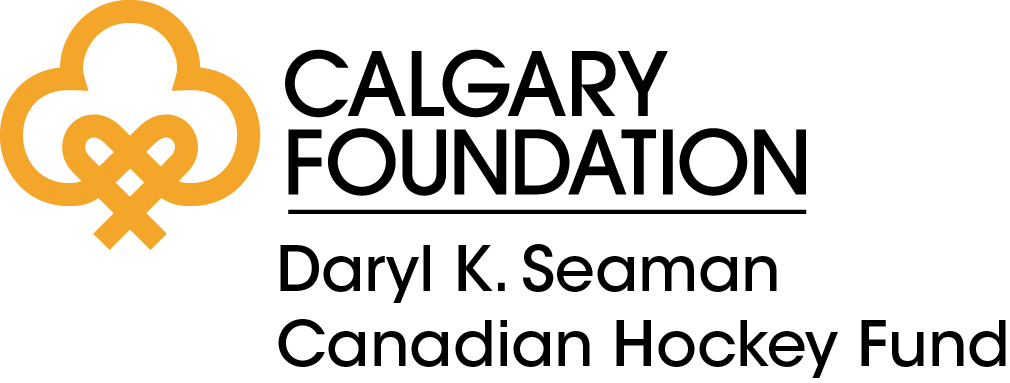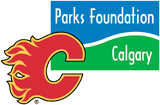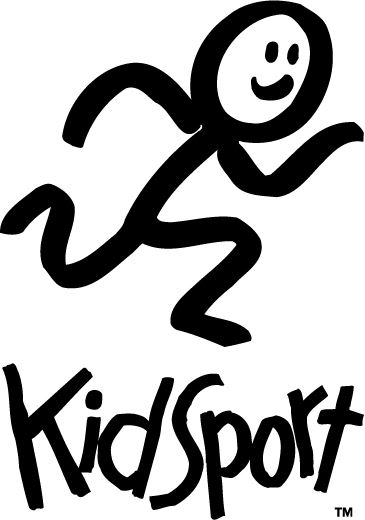Keelboat 2 Glenmore (Keelboat Skipper) Performance Objectives
Basic Cruising Standard Performance Objectives covered in the Keelboat 2 (Keelboat Skipper) course
(italicized items are Glenmore Sailing Club course content is addition to Basic Cruising Standard content)
Preparation and Safety Equipment
- Check safety equipment - location, condition, operation
- Crew safety briefing
- Weather check
- Vessel and equipment ok for departure
- Sheets and halyards prepared for use
- Demonstrate heaving line use [p45]
- Demonstrate life jacket use [p3, 31,56]
- Tie cleat knot
- Coil and flake lines
- Belay a line on a cleat
- Tie round turn and half hitches
- Winch & cleat use and line handling
- Tie figure 8
- Tie reef knot
- Tie bowline
- Tie clove hitch
- Tie double sheet bend
Dock etiquette
- The dock area can be a congested place
- Be efficient on the launch ramp - prepare boat before going to dock - keel cable has tension, dock lines on and ready. Back boat down into water, additional crew holding dock lines, walk boat away from launch ramp, secure to dock, return trailer to parking lot
- Talk with others on the dock if it’s busy so everyone gets to and away from the dock fairly
- When returning to the dock, dock the boat further from shore than other boats appearing ready to pull out of the water
- Be efficient when pulling the boat / putting back onto its trailer – have the boat snugged down, sails away, keel in up position, and rudder off before getting the vehicle and trailer
- Be helpful. Take a bow line and pass a boat around your boat if it helps another sailor get around your boat to go sailing or pull out of the lake
- You are representing the Glenmore Sailing Club… smile and be friendly.
Safety
- Glenmore Boat Patrol - cell number location in co-op boats on QR code sheet
- follow their direction / guidance
Launching a SanJuan 21 keelboat
- Complete online boat check out - use QR code to get online form on your phone
- A bit of tension keel winch cable - otherwise the keel winch braking mechanism does not function and the keel will slam into the bottom as it leaves the trailer
- Observe wind direction and determine preferred side of dock to launch on (east or west) - boats on mooring balls are useful visual aids
- Bow and stern lines on
- Fenders on
- verify 2" ball on tow vehicle
- attach trailer coupler to hitch ball
- attach safety chains - shall not drag on the ground - use a bungee around the trailer tongue if needed to take up a bit of slack
- remove wheel chocks from around tires
- now crew can safely get up onto the boat once the boat is attached to a vehicle
- slower than 5 km/h when towing a trailer
- slower for potholes and bumps
- Maintain an awareness of pedestrians / other vehicles / people on dock. The dock area can be busy
- After driving down the boat ramp, just before backing up to water, disconnect trailer winch line/strap from boat
- Crew takes bow and stern lines in hand
- Avoid hitting the dock with trailer fender, boat guide arm or boat
- The target placement of the trailer when launching a boat is to have trailer wheel fender 1-2 feet from the dock
- Crew walk boat backwards away from trailer before the vehicle and trailer are moved forward
- The boat should be moved away from the ramp area and tied to the dock.
-
- If there are two crew (one each on stern and bow lines), the vehicle and trailer is immediately returned to the parking lot area.
- If there is one crew holding both stern and bow lines, the vehicle driver assists with moving the boat and securing to the dock before the vehicle and trailer are returned to the parking area.
- Steer your vehicle slightly away from the dock when pulling a trailer out of the water to prevent clipping the dock with the trailer fenders
- Same slow speed when towing an empty trailer. Unloaded trailers are noisy and people perceive that to mean traveling at a higher speed
- Return trailer to same parking spot it came from
- Leave vehicle attached to trailer when out sailing
Working With Sails
- Chooses appropriate location for activity
- process, crew roles
- halyard tension [p125, Figure 20.2]
- same principles apply for hanked on jib halyard tension
- too much halyard tension stretches the sail cloth and ruins sails
- too little halyard tension leaves the boom lower in the cockpit that it should be (hazard) and prevents correct sail shape
- The boat may need to be moved from its initial position where it was tied up after launching so it is on the leeward side of the dock and head to wind. Sails are to be raised at the dock only when the boat is head to wind. This may require turning the boat around or moving to another portion of the dock or easing the stern line to allow the boat to align itself head to wind
- Boom gooseneck in mast track
- unfurl mainsail / attach main halyard to head of sail
- rig boom vang, cunningham, mainsheet
- attach jib tack, hank on jib, attach halyard, run jib sheets through blocks
- Raise main - head should be just below the upper black band on the mast, set vang and cunningham
- Raise jib
- Verify halyard tension is "just right".
- Verify vang and cunningham tension are also "just right"
- NOTE: sails are raised immediately before leaving the dock to prevent flogging them. If something was forgotten in the car or one last trip to the loo is required, lower sails. Raise again when ready to leave the dock.
Departure from Dock & Docking [p86]
- Tasks assigned and understood
- Uses appropriate communications
- Line handling for vessel control
- Check for / aware of traffic
- Docking speed, process, crew safety
- Undocking speed, process, crew safety
Sailing away from the dock
- Review traffic on water
- Evaluate wind direction and your sailing path when leaving the dock
- Beware the point of land immediately west of the Heritage dock, it is an underwater hazard as it slopes away very gradually. Boats go aground here.
Reefing process, crew roles, location [p149]
Shake out reef: process, crew roles, location [p151]
Crew communication (at all times, including)
- heading up and bearing away [p136]
- tacking [p141]
- gybing [p143]
- heaving to [p147]
- raising sails
- lowering sails [p152, 153]
Basic Sailing Manoeuvers
- Luffing and controlling speed
- Appropriate communications
- Gybing
- Points of sail (close hauled, reach, run)
- Holding a course (close hauled, reach, run)
- Basic trim
- Tacking
- Heading up and bearing away
- Beating to windward
- Gybing downwind
- Taking the boat to a destination
- Rounding a mark
- Heaving to
- Crew communication
- Initial actions - alert, spotter, flotation
- Boat immediately on a beam reach
- Head up, tack, bear away to broach reach
- head up to close reach and pick up crew on windward side of boat
- Boat speed when stopping alongside crew < 1 knot
- Windward pickup of crew is preferable unless crew is injured
Sailing back to the dock
- Identify your target docking location - boat to be positioned on leeward side as close to head to wind as possible
- Fenders and dock lines made ready on appropriate side
- Douse jib before docking
- Have a bail out plan in case entry doesn’t go as planned - how will you sail out and away to set up again to return to the dock
- Awareness of traffic on the water as you approach the dock
- Keep the mainsail raised until the boat is tied up at the dock
- Approach the dock with enough way to have directional control, but never faster than the speed at which you are willing to contact the dock.
- The mainsail can be backwinded to slow / stop boat if required. Always backwind the main over the water / never over the dock (for the safety of people on the dock)
- Vessel secured: fenders, spring & breast lines
- Sails flaked / furled and covered / stowed
- Equipment stowed
- Vessel clean
Lowering sail afloat: process crew roles, sail control
Lowering sail at the dock: process crew roles, sail control
- boat head to wind
- release jib halyard - keep sail on deck - don’t allow to fall over side into water
- hold boom
- ease main halyard
- set boom down in cockpit
- release halyard, fully drop main
- roll mainsail from head towards boom
Returning a boat to the trailer
- Sails stowed, port side below
- Rudder off, stow port side of keel trunk
- keel raised - no further than the black line on the backside of the keel indicates
- keel lock pin put in place above secured keel (in case keel cable breaks)
- Vehicle and trailer brought down to water, trailer backed into water until line on centering arms is just awash
- Crew move boat forward above trailer
- Trailer winch strap attached to bow eye
- Boat drawn forward with winch to trailer's bow chock
- Drive forward slowly to verify boat centered on trailer
- Crew coils bow line and secures to pulpit
- Crew coils stern line and stows in cockpit
- Steer vehicle slightly away from the dock when pulling a trailer out of the water to prevent clipping the dock with the trailer fenders or centering arm
- Same slow speed as when launching.
- Return trailer to same parking spot it came from
- Remove personal gear from boat, lock hatch cover
- Detach trailer from tow vehicle
- Tongue jack lowered so cockpit will drain
ColRegs: basic
- Moyie
- It has right of way at all times - Restricted Manoeuvrability
- Sound Signals for Manoeuvering - 1 prolonged blast means leaving the dock
- Rowing Club
- Rowing Lanes - stay out of the lanes
- Rowers visibility - rowers face backwards, additional attention required onboard sailboats
- Canoes, kayaks, Voyageur canoes, Dragon boats, other
- Give way
- Sailboats look big when you're sitting low to the water
The Reservoir
- The reservoir serves the dual function of drinking water and flood prevention.
- Sailors can estimate water depth and the safe sailing areas by amount of foreshore at the boat launch; the position of the dock (is a length of it on the ground before it floats indicating lowered water); time of year (May and June have greater variability)
- rivers.alberta.ca website shows Reservoir depth - zoom in on map to the reservoir dam area, there are two circles, choose Glenmore Reservoir not Glenmore Diversion.Look at the charts and graphs to see where the level is relative to norms for the period (including percentage full)
- Underwater hazards - these are a factor with lowered water levels
- the shallow point immediately (60-80') west of the Heritage dock
- the southwest basic - west of the Elbow River channel which runs west of the South Point and east of the Canoe Club. This area can be particularly shallow or even a mud flat when the water level is lowered
- weeds - in the early spring when water turbidity is high, weeds are small and a non issue. Weeds can be a significant issue in the SW basin west of the Elbow River channel as the season goes on and the water clarity increases allowing sunlight deeper in the water. Among the problems with weeds is they collect on the keel and rudder. This impacts manoeuverability and if weeds are wrapped around the
Basic Cruising Standard Performance Objectives not covered in the Keelboat Skipper course
- Engine start/stop and cooling water flow
- Engine and steering controls
- Tasks assigned and understood
- Uses appropriate communications
- Line handling for vessel control
- Check for / aware of traffic
- Docking speed, process, crew safety
- Undocking speed, process, crew safety
- Stops vessel at specified location
- Steers vessel on straight course
- Prop walk
- Turning ahead and astern to port and starboard
- Proper helm management
- Stopping distance
- Engine off for recovery
- Beam to or head to wind pickup
- Return under power
- Initial actions - alert, spotter, flotation
- Selects / checks anchorage location
- Prepared to anchor
- Anchor lowered and set
- Anchor retrieval under power
- Stow / secure anchor; clean foredeck
- Crew communication
- Buoyage: obey lateral, cardinal & special
- Colregs: sail, power lights & rules
- Charts: find location & local hazards
 Our youth sailing program charitable donations are generously managed by
Our youth sailing program charitable donations are generously managed by 




